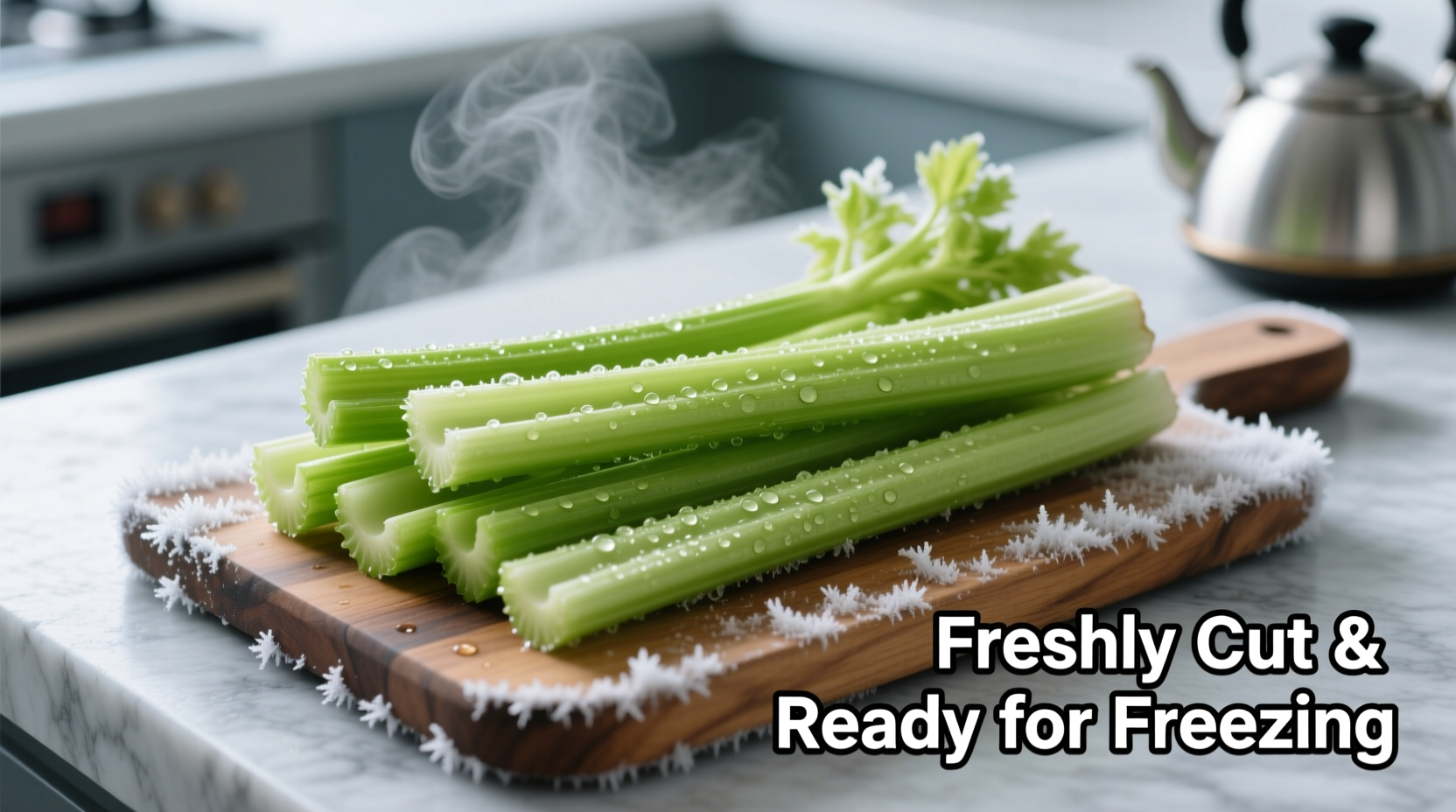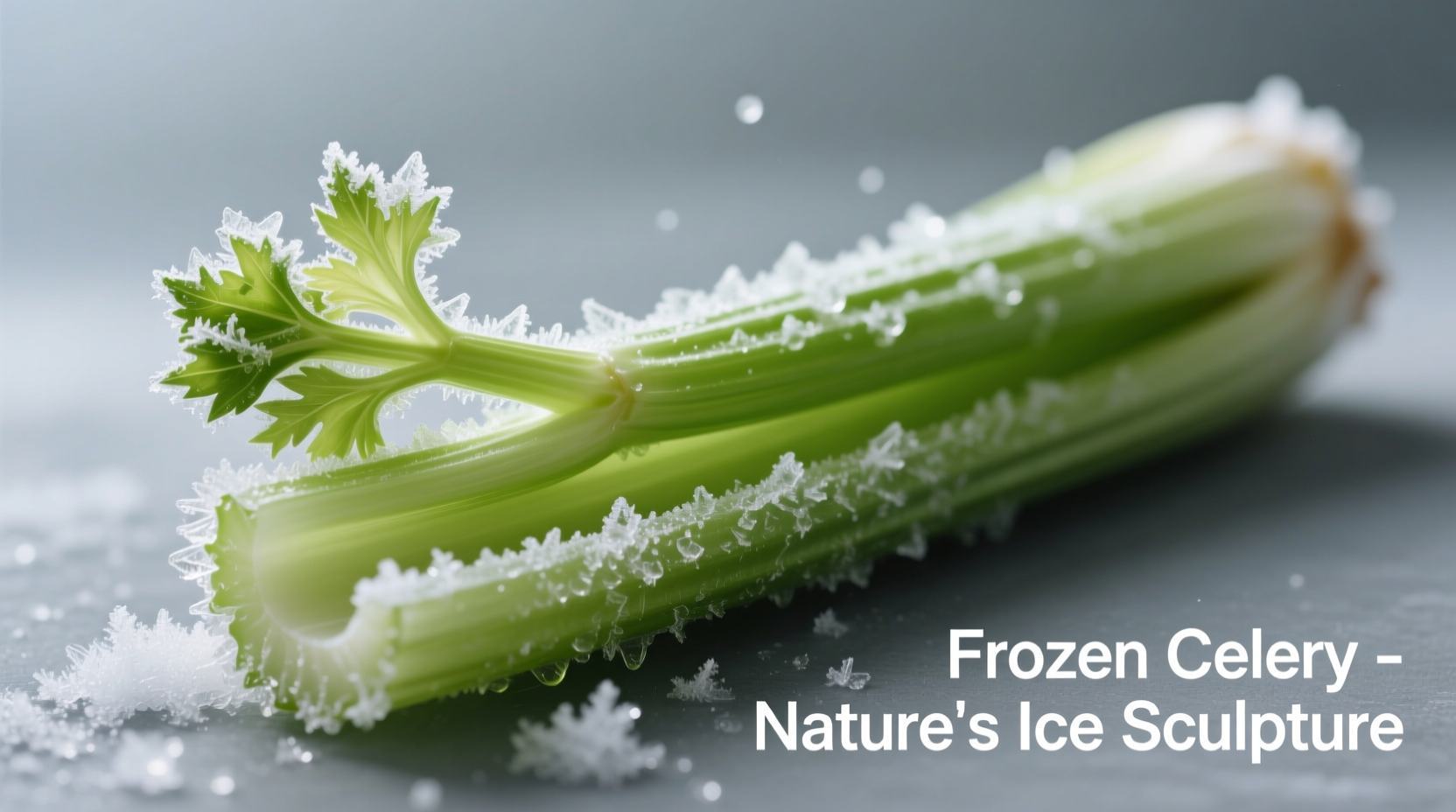Yes, you can freeze celery effectively for 10-12 months when properly prepared. Blanching celery for 3 minutes before freezing preserves texture and flavor best, while unblanched celery lasts 2-3 months for cooked dishes only. Frozen celery works perfectly in soups, stews, and stocks but becomes too soft for raw applications after thawing.
Discover exactly how to freeze celery to maximize shelf life and culinary performance. This comprehensive guide reveals professional techniques used by chefs to preserve celery's flavor compounds while minimizing texture degradation. You'll learn which freezing method matches your cooking needs, precise timing for blanching, optimal storage containers, and creative ways to use frozen celery that most home cooks never consider.
Why Freezing Celery Makes Practical Sense
With celery's high water content (95%) and delicate structure, proper freezing technique is essential for maintaining usability. According to USDA food preservation guidelines, correctly frozen vegetables retain 90-95% of their nutritional value compared to fresh counterparts. When you have more celery than you can use within its typical 2-week refrigerator lifespan, freezing prevents food waste while preserving flavor compounds for future cooking.
| Freezing Method | Prep Time | Storage Duration | h>Best For|
|---|---|---|---|
| Blanched & Frozen | 15 minutes | 10-12 months | Soups, stews, stocks |
| Raw Frozen | 5 minutes | 2-3 months | Cooked dishes only |
| Flash Frozen Pieces | 20 minutes | 8-10 months | Portion-controlled cooking |
The Science Behind Successful Celery Freezing
Celery's cellular structure contains polyphenol oxidase enzymes that cause browning and texture degradation when exposed to air and temperature changes. The University of Minnesota Extension explains that blanching deactivates these enzymes through brief heat exposure, preserving color, texture, and nutrients during frozen storage. Skipping this step results in faster quality deterioration, though raw freezing works acceptably for short-term storage when you'll use the celery exclusively in cooked applications.

Step-by-Step Freezing Methods
Method 1: Professional-Grade Blanching (Best for Long Storage)
- Wash and trim celery, cutting into 1-inch pieces or leaving whole stalks
- Bring 1 gallon of water to rolling boil with 1 tablespoon salt
- Submerge celery for exactly 3 minutes (critical timing)
- Immediately transfer to ice water bath for 3 minutes
- Dry thoroughly on clean towels (moisture causes freezer burn)
- Pack in airtight containers with 1/2 inch headspace
Method 2: Quick Raw Freeze (For Immediate Cooking Use)
Skip blanching when you'll use frozen celery within 3 months exclusively in cooked dishes. Simply wash, dry thoroughly, and pack in vacuum-sealed bags. This method works well for soup preparation but yields softer texture than blanched celery.
Method 3: Flash Freezing for Portion Control
Arrange blanched celery pieces in single layer on parchment-lined baking sheet. Freeze for 2 hours until solid, then transfer to labeled containers. This technique prevents clumping and allows you to remove only what you need for recipes.
Storage Timeline and Quality Preservation
Understanding how frozen celery degrades over time helps you maximize usability. Research from the National Center for Home Food Preservation shows the following quality timeline:
- 0-3 months: Near-fresh quality for cooked applications
- 4-6 months: Slight texture softening, ideal for soups and stocks
- 7-9 months: Noticeable texture change, best for blended dishes
- 10-12 months: Usable but diminished quality, use only in strongly flavored dishes
Always label containers with freezing date and method used. Store at 0°F (-18°C) or below in the coldest part of your freezer, away from the door where temperature fluctuates.
Culinary Applications for Frozen Celery
Frozen celery shines in specific cooking applications while failing in others. Professional chefs consistently use frozen celery in these ways:
- Mirepoix and soup bases: Frozen celery blends perfectly with carrots and onions
- Stocks and broths: Releases flavor compounds effectively during simmering
- Blended soups: Texture becomes irrelevant in pureed preparations
- Casseroles: Holds up well when baked with other ingredients
Avoid using thawed frozen celery in:
- Salads or raw applications
- Ceviche or cold preparations
- Dishes where crisp texture is essential
Critical Mistakes That Ruin Frozen Celery
Even with proper freezing technique, these common errors compromise results:
- Incomplete drying: Surface moisture creates ice crystals that damage cell structure
- Overpacking containers: Prevents proper air circulation during freezing
- Using thin plastic bags: Allows oxygen penetration causing freezer burn
- Thawing at room temperature: Accelerates texture degradation (thaw in refrigerator)
For optimal results, always use rigid freezer containers or heavy-duty freezer bags with air completely expelled. Vacuum sealing extends shelf life by 25-30% compared to standard containers.
Maximizing Flavor from Frozen Celery
When cooking with frozen celery, add it directly to hot liquids without thawing. The University of California Cooperative Extension recommends adding frozen vegetables to soups and stews during the last 20-30 minutes of cooking to preserve flavor compounds that would otherwise leach into cooking liquid. For stocks, frozen celery can go directly into cold water at the beginning of the simmering process.
Chef-tested tip: Combine frozen celery with aromatic herbs like thyme and bay leaves early in cooking to create complex flavor foundations. The freezing process actually helps release certain flavor compounds more readily during cooking compared to fresh celery.











 浙公网安备
33010002000092号
浙公网安备
33010002000092号 浙B2-20120091-4
浙B2-20120091-4